All complex animals consist of only four types of cells. These cell types vary in structure according to their function. The basic classification of animal tissues is as follows:
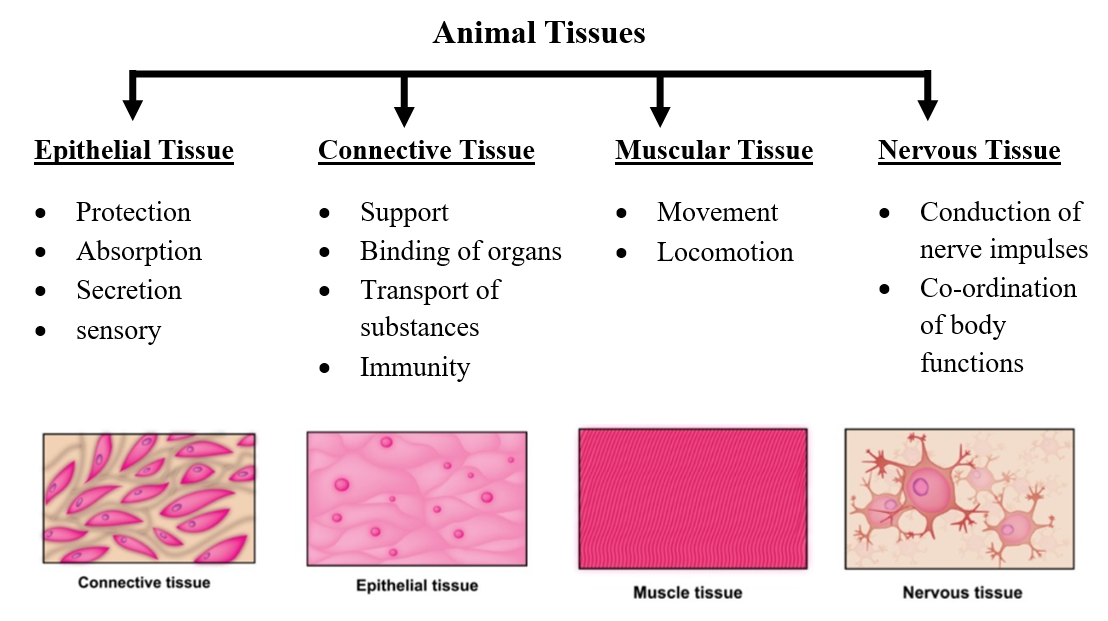
EPITHELIAL TISSUE
- Cells of epithelial tissue form a layer on free surfaces which either faces a body fluid or faces the external environment.
- Hence, it either acts as an inner lining of various body parts such as visceral organs, blood vessels or body cavity.
- The cells are compactly arranged with very thin layer of extracellular material in between them.
- Adjacent cells are connected by means of cell junctions.
- There are two types of epithelial tissues – Simple Epithelium and Compound Epithelium.
Simple Epithelium
- It is usually composed of a single layer of cells.
- They are found in the lining of body cavities, ducts and tubes.
- On the basis of structural modifications, simple epithelium is divided into:
- Squamous epithelium
- Cuboidal epithelium
- Columnar epithelium
- Pseudo-stratified epithelium
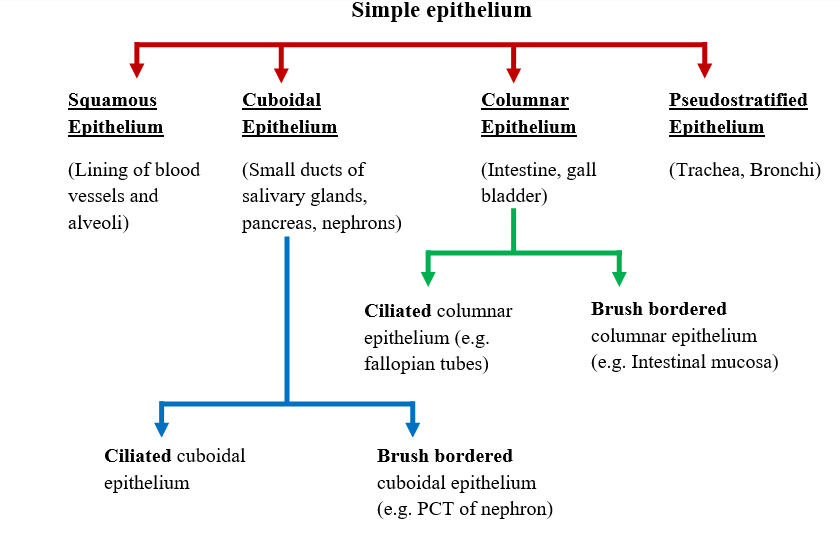
Squamous Epithelium
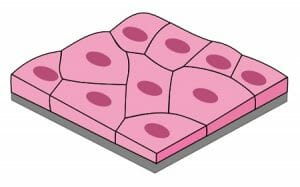
- It is made of a single layer of flattened cells with irregular boundaries.
- They are found on the inner surfaces of blood vessels and air sacs (alveoli) of lungs.
- Function: Forms a diffusion boundary for gases and molecules.
Cuboidal Epithelium
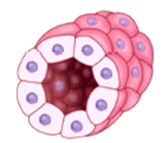
- It is composed of a single layer of cube like cells.
- They are usually found on the inner surfaces of the ducts of glands, and tubules of nephrons.
- Function: Secretion and absorption
- In nephrons, the epithelium in PCT (proximal convoluted tubule) has finger-like extensions called microvilli.
Columnar Epithelium
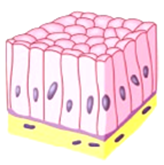
- It is made of a single layer of tall and slender cells with their nuclei at the base.
- Sometimes, they may have microvilli.
- It is usually found in the lining of stomach and intestines.
- Function: Secretion and absorption
If the columnar or cuboidal cells bear cilia on their free surfaces, they are called ciliated epithelium. It helps to move particles or mucus in a specified direction. Such surfaces are found in the lining of hollow organs like fallopian tube and bronchioles.
Pseudostratified Epithelium

- It is made of cells that reach the basement membrane.
- But, they appear to be stratified because the nuclei of the cells are seen at different levels.
- Hence, they are called pseudo–stratified.